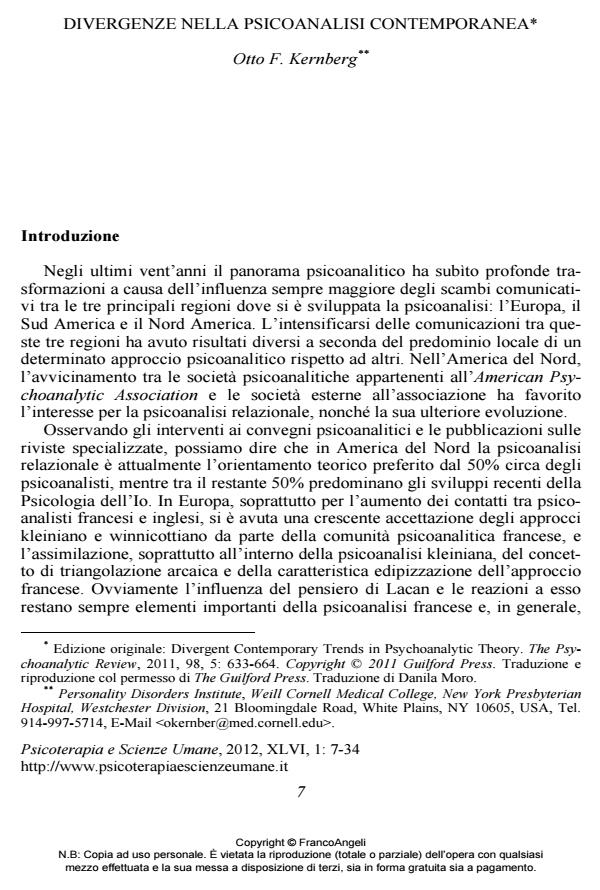Divergent contemporary trends in psychoanalytic theory
Journal title PSICOTERAPIA E SCIENZE UMANE
Author/s Otto F. Kernberg
Publishing Year 2012 Issue 2012/1
Language Italian Pages 28 P. 7-34 File size 319 KB
DOI 10.3280/PU2012-001001
DOI is like a bar code for intellectual property: to have more infomation
click here
Below, you can see the article first page
If you want to buy this article in PDF format, you can do it, following the instructions to buy download credits

FrancoAngeli is member of Publishers International Linking Association, Inc (PILA), a not-for-profit association which run the CrossRef service enabling links to and from online scholarly content.
Main contemporary psychoanalytic theories are reviewed, and the major divergent trends are examined. In North America, the exchanges over the last twenty years between the American Psychoanalytic Association and other groups have favored the diffusion of relational psychoanalysis (Mitchell, Aron, etc.), now represented by about 50% of North American analysts. Exchanges with European analysts have favored also the neobionian approach (Ogden, Ferro, etc.). After a brief overview of the main aspects of neobionian and relational psychoanalyses, both approaches are criticized. While Freudian psychoanalytic theory and technique tried to include the highest number of variables, these two approaches neglect some important aspects: relational psychoanalysis neglects the exploration of the deepest aspects of the unconscious, and both approaches neglect the full exploration of present reality and character structure.
Keywords: Psychoanalytic theory, theoretical critique, psychoanalytic controversies, relational psychoanalysis, neobionian psychoanalysis]
Otto F. Kernberg, Divergenze nella psicoanalisi contemporanea in "PSICOTERAPIA E SCIENZE UMANE" 1/2012, pp 7-34, DOI: 10.3280/PU2012-001001